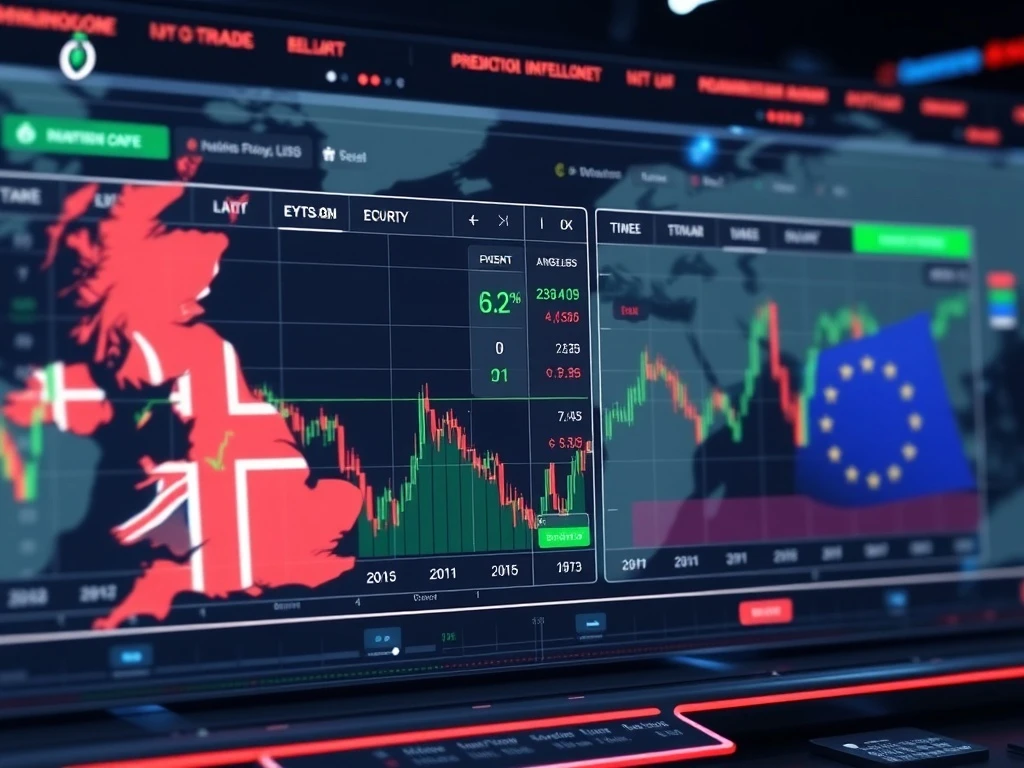Robinhood’s Ambitious Global Leap: Expanding Prediction Markets into UK & EU

Robinhood has achieved remarkable success with its prediction markets in the United States. This platform allows users to trade on real-world event outcomes. Following this strong uptake, the discount brokerage now eyes a significant global expansion. This move aims to bring its innovative offering to the United Kingdom and Europe. Consequently, the firm is navigating complex regulatory landscapes to make this vision a reality. This development holds keen interest for both traditional investors and cryptocurrency enthusiasts, as it touches upon the future of event-based trading and regulatory frameworks.
Robinhood’s Strategic Global Expansion: Targeting UK and EU
Robinhood’s strategic move into international markets represents a bold step. The company introduced its Prediction Markets Hub earlier this year. This platform lets users speculate on events such as interest rate decisions or sports results. Now, Robinhood is actively exploring ways to launch similar services overseas. Early plans specifically target the UK and EU regions. These areas have shown considerable demand for prediction market products, according to company executives. JB Mackenzie, vice president and general manager of futures at Robinhood Markets, confirmed this strong interest. He noted that discussions are underway with local authorities to ensure a smooth rollout.
This expansion aligns with Robinhood’s broader growth strategy. The company continually seeks new avenues for user engagement and market penetration. Their US success provides a robust blueprint for this international venture. Furthermore, extending their reach beyond domestic borders could unlock substantial new revenue streams and user bases. This initiative highlights the growing global appeal of event-based financial products.
Navigating Complex Regulatory Classification for Prediction Markets
One of the primary challenges for Robinhood in its international expansion involves regulatory classification. In the United States, prediction markets are typically treated as futures products. Consequently, the Commodity Futures Trading Commission (CFTC) oversees their operation. However, this classification is not universal. In other jurisdictions, similar products may fall under gambling laws. This distinction raises significant questions about oversight and compliance. For instance, Robinhood is currently in discussions with the UK Financial Conduct Authority (FCA). They aim to determine how these products could be offered locally.
JB Mackenzie emphasized this regulatory hurdle. He asked, “So the question would be where is swap oversight, let’s say in the UK? That’s a question that we’ve been asking the FCA, how do we work it?” This highlights the critical need for clear legal definitions. The differing legal frameworks present a complex environment for market operators. Successful navigation of these rules will be crucial for Robinhood’s entry into the European market. Without proper classification, market operations could face significant legal and operational hurdles.
The US Blueprint: Robinhood’s Prediction Market Success
The interest in expanding overseas is entirely understandable, given Robinhood’s phenomenal success in the US market. Robinhood CEO Vlad Tenev recently shared impressive statistics on X. The platform has already seen more than 4 billion event contracts traded. Significantly, over half of that volume occurred in the third quarter alone. These figures underscore the platform’s strong user engagement and the inherent demand for prediction markets. Such rapid growth provides a compelling case for replicating the model internationally.
Robinhood’s product, while mimicking the structure of decentralized prediction markets, operates on traditional financial rails. Event contracts are executed through Kalshi. Kalshi is a CFTC-regulated derivatives exchange. All settlements occur in US dollars. This established infrastructure provides a familiar and secure environment for traditional investors. Even so, Robinhood maintains a strong presence in the crypto and blockchain sectors. They offer digital asset trading and are exploring tokenized stock offerings. This dual approach allows them to cater to a broad spectrum of users.
Decentralized vs. Traditional: A Look at Prediction Market Structures
Prediction markets have surged in prominence over the past year. This growth is largely fueled by the rise of decentralized platforms. These innovative markets are built on public blockchains. They utilize smart contracts to automate trades and payouts. Users can speculate on a wide array of outcomes, including elections, economic data, and sports. Polymarket, a leading decentralized platform built on Polygon, exemplifies this trend. It has reported billions of dollars in monthly trading volume. Activity peaked during the lead-up to the US presidential election in November 2024.
In contrast to Robinhood’s traditional setup, decentralized platforms offer greater transparency and accessibility. However, they also face unique challenges. These include higher volatility, regulatory uncertainty, and uneven liquidity. Polymarket’s accuracy and liquidity during the US election cycle drew widespread attention. Traders’ forecasts often tracked closely with eventual outcomes. Ethereum co-founder Vitalik Buterin views election cycles as just the beginning. He believes the deeper innovation lies in using financial incentives to align truth-seeking behavior. He stated, “The broader concept is that you can use finance as a way to align incentives in order to provide viewers with valuable information.” This philosophical underpinning highlights the potential societal value of these markets beyond mere speculation.
Future Outlook: The Growing Influence of Event Contracts in the EU and UK
The potential expansion of Robinhood’s prediction markets into the UK and EU marks a significant moment. It could accelerate the mainstream adoption of event-based trading. The ongoing discussions with the FCA are critical. Their outcome will likely shape the regulatory landscape for similar products across Europe. Furthermore, increased clarity could foster greater institutional participation. This would enhance market liquidity and stability. As these markets mature, their role in information aggregation and risk management could expand considerably. The future of event contracts appears bright, with significant implications for how individuals and institutions engage with real-world outcomes through financial instruments.








